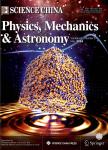Application of the SCC method to the multi-O(4) model:The collective Hamiltonian
Application of the SCC method to the multi-O(4) model:The collective Hamiltonian作者机构:Department of PhysicsGraduate School of ScienceKyoto University AdvancesoftCenter for Collaborative ResearchUniversity of Tokyo
出 版 物:《Science China(Physics,Mechanics & Astronomy)》 (中国科学:物理学、力学、天文学(英文版))
年 卷 期:2009年第52卷第10期
页 面:1518-1529页
核心收录:
学科分类:08[工学] 0805[工学-材料科学与工程(可授工学、理学学位)] 0827[工学-核科学与技术] 082701[工学-核能科学与工程] 0704[理学-天文学]
基 金:Supported by the National Natural Science Foundation of China (Grant No.10675170) the Major State Basic Research Development Program of China (Grant No.2007CB815003)
主 题:self-consistent collective-coordinate method multi-O(4) model time-dependent Hartree-Bogoliubov theory collective Hamiltonian
摘 要:The collective Hamiltonian up to the fourth order for a multi-O(4) model is derived for the first time based on the self-consistent collective-coordinate(SCC) method,which is formulated in the framework of the time-dependent Hartree-Bogoliubov(TDHB) *** collective Hamiltonian is valid for the spherical case where the HB equilibrium point of the multi-O(4) model is spherical as well as for the deformed case where the HB equilibrium points are *** validity is tested numerically in both the spherical and deformed *** simulations indicate that the low-lying states of the collective Hamiltonian and the transition amplitudes among them mimic fairly well those obtained by exactly diagonalizing the Hamiltonian of the multi-O(4) *** numerical results for the deformed case imply that the optimized RPA boundary condition is also valid for the well-known η*,η expansion around the unstable HB point of the multi-O(4) *** these illuminate the power of the SCC method.



